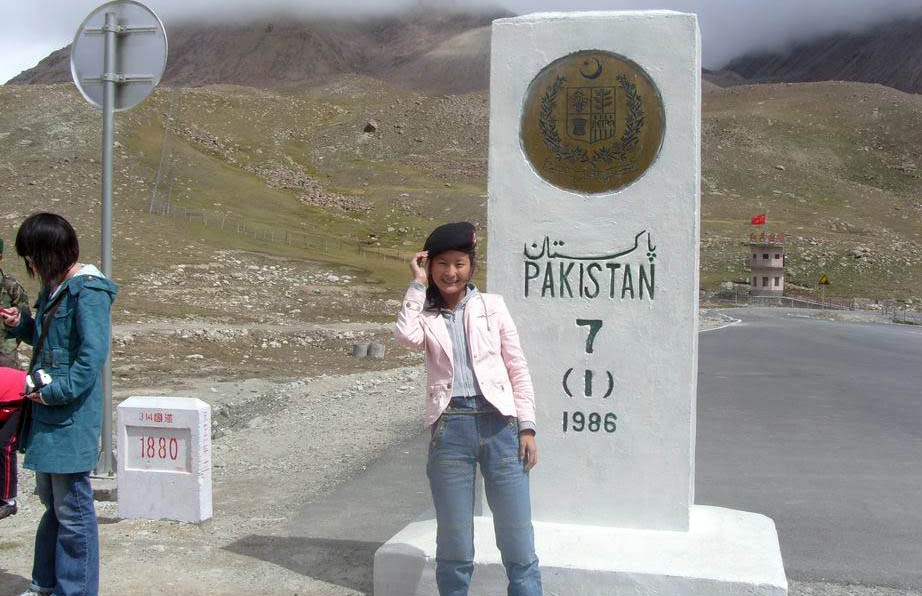
As CPEC continues to pick up speed, the number of Chinese people joining the local workforce is only going to increase

In my neighbourhood live a few Chinese expatriates. Every evening, they like to go for a jog. Headphones inserted in their ears, they jog and walk around the neighbourhood with careless abandon. A few paces behind them, walks a policeman, with a gun slung on his shoulder. Wherever they go, he goes.
Over the past few years, the face of Lahore has changed dramatically. We now have wider roads, taller buildings and lesser trees. The police force has a new uniform, and the dolphin squad zooms about its business, in just black clothing, which is bound to be uncomfortable, considering what the temperatures are these days. But they look cool nonetheless.
Another new feature, is the burgeoning Chinese community. Everywhere from airports to schools, golf courses and marketplaces, hospitals and cinemas, it’s something one cannot not notice. The Chinese aren’t just coming, they’ve already arrived. The spurt over the last few years has obviously been on the back of the destiny changing China-Pakistan Economic Corridor (CPEC). But nobody has a handle on the exact number of Chinese living in Lahore, let alone Pakistan.
"Around 10,000 Chinese people are currently in the province," says DIG Syed Faisal Rana, who heads the Special Police Unit, which is tasked with providing security to not only foreigners but also to those designated by the government as under high risk. "Along with the SPU, the SSD, army security, Rangers, district police, and in some areas, the border military police also provide them security."
According to the DIG, the SPU is currently made up of 7,000 personnel operating across the province.
Read also: Corridor politics
At first glance, this number, 10,000, does not seem correct. Take a trip to the airport, and you’ll find flights coming in, filled with Chinese nationals. But for a large section of them, the city is just a staging ground. "Lahore serves as home base -- from here, they move to other cities of the country," says an airport official, who requested to not be named. His claim makes sense, the ruling PML-N, and hence by association, the Punjab government are the main facilitators of CPEC.
In October 2016, the President of the Pakistan China Joint Chamber of Commerce and Industry (PCJCCI), Wang Zihai, was quoted as saying that "around 700 small and large Chinese companies are working across Pakistan." This number, according to the PCJCCI, has now gone up to 750. They further elaborate that most of the Chinese nationals that have come into the country have come either to fill upper management roles, or as experts and consultants. The main workforce, I am told, is Pakistani.
A source at one of the largest Chinese companies operating locally in the telecommunications sector suggests that Chinese workers are coming in as "white collar office resources, at the junior to mid and senior management levels". In his company, the ratio was 60:40, with the latter being Chinese.
According to the PCJCCI, the exact ratio of Chinese and Pakistani nationals in any company or business concern depends on the terms and conditions agreed upon in the joint venture agreement and/or memorandum of understanding. However, the rule of the thumb is an equal 50:50 split, in the upper management. The lower level workforce, they maintain, is Pakistani.
This claim, again, is incomplete. According to the source at the telecommunication company, there are three kinds of staff present. First is subcontractor’s staff: the parent (Chinese company) sublets their work to a local company (This is the most common practice). Second is outsourced project staff: these employees come in only for certain projects. And third is HR outsourced staff: they come from human resource companies that provide staff of parent companies -- these personnel may work in the same office as the in-house staff, but don’t get the same perks as them.
However, there is a significant grey area. Apart from the 750 Chinese companies operating in the country, there are more than 650 local companies, with Chinese directors. Their main areas of interest include power generation, construction, real estate, logistics, mining, and agriculture to name a few.
Another problem is that either nobody is entirely sure how many Chinese companies and people have come in on the back of CPEC or are unwilling to share the information. It makes sense that the Federal Investigation Agency or the Ministry of Interior would (or should) have this information, but they were unavailable for comment. Hence, conjecture is king.
Still, as CPEC continues to pick up speed, the number of Chinese people joining the local workforce is only going to increase. Countries, such as Saudi Arabia have recently tightened restrictions on foreign workers to pressurise companies into hiring more locals. The reason behind this is simple: ease unemployment amongst the locals.
In Pakistan, the current unemployment rate stands at 5.90 per cent. Under CPEC, a large number of jobs, at all levels are bound to open up. Will Pakistan, like Riyadh, ensure that locals get a piece of this pie? So far, and judging by the way government has allowed local companies to find their own equilibrium with their Chinese counterparts, the answer is no.